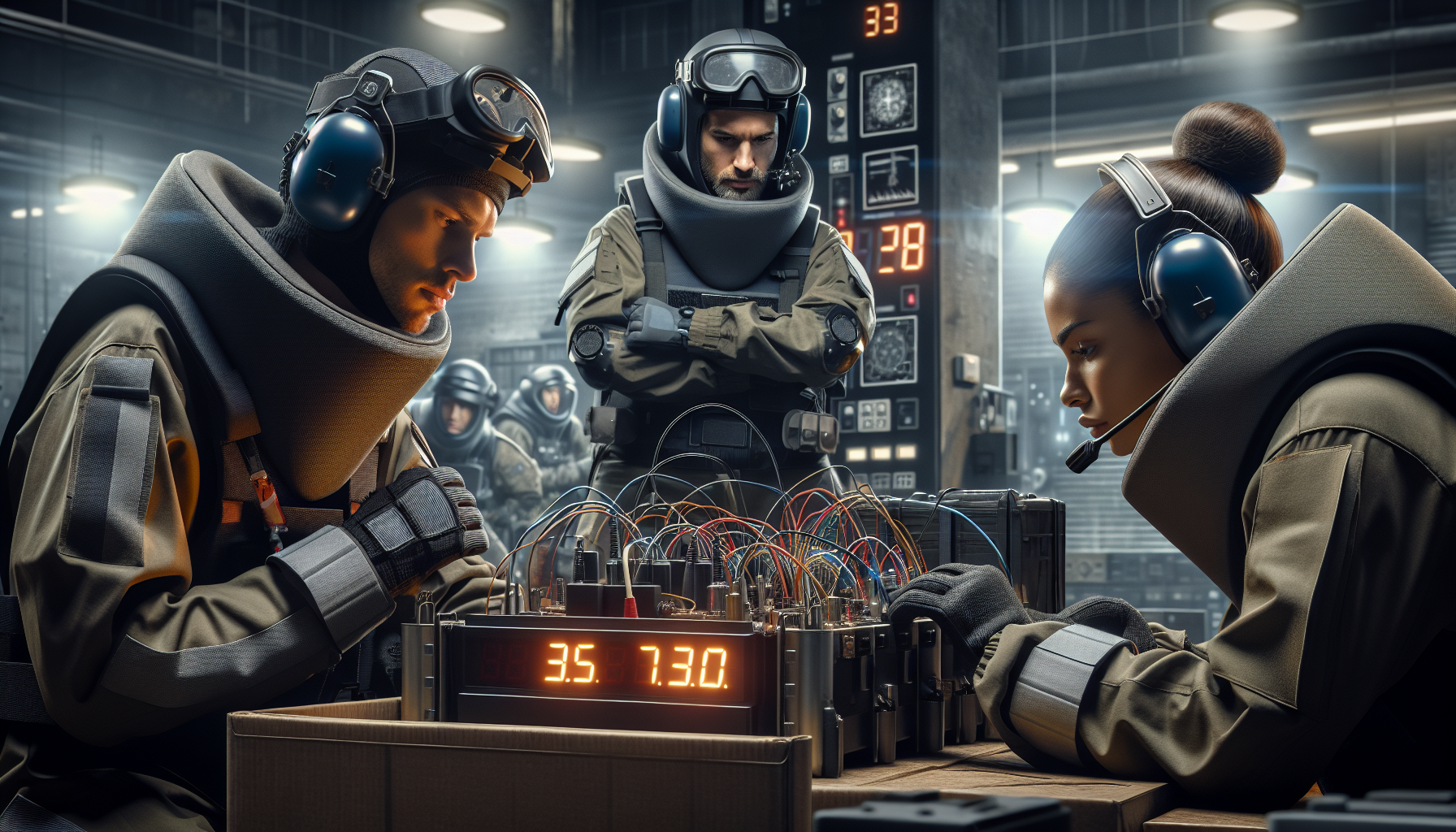
Experience plays a crucial role, enabling bomb disposal experts to identify minute details that others might overlook. For instance, they might recognize unusual wiring patterns or the type of explosive used, which can hint at how the device is constructed and its potential triggers. This careful analysis can make the difference between life and death, not just for themselves but for anyone nearby.
The job isn’t just about the technicalities of handling explosives. It involves a crucial component of teamwork. Bomb disposal experts often work closely with tactical teams, law enforcement, and emergency services to ensure a coordinated response to threats. This collaboration can provide a broader understanding of the situation, allowing for strategies that will mitigate risks.
Adapting to changing circumstances is another key aspect of the role. An expert might arrive on scene with a specific plan, but the dynamics of a situation can shift rapidly. Factors like weather conditions, civilian presence, or even the behavior of a suspect can necessitate quick changes in strategy. Bomb disposal experts rely on both their training and intuition to make these adjustments, balancing speed with caution.
Ultimately, the work of bomb disposal experts is not just about technical proficiency; it’s also a deep commitment to protecting human lives, often amid chaos and uncertainty. Each day presents new challenges, and their capacity to manage both the physical dangers of explosives and the psychological toll of continuous vigilance is what sets them apart in high-pressure environments.
Techniques And Tools For Safe Disposal
When it comes to safely disposing of explosives, bomb disposal experts are equipped with an array of specialized techniques and tools that are critical to their success. The foundation of their practice lies in a methodical approach that prioritizes safety and efficiency. Whether it’s utilizing remotely operated vehicles (ROVs) or advanced bomb suits, each tool plays a pivotal role in neutralizing threats.
One of the primary tools is the bomb suit, engineered to provide maximum protection against shrapnel and blast waves. These suits can weigh upwards of 80 pounds, limiting agility but offering a vital barrier between the operator and the device. Inside the suit, experts rely on personal protective equipment like helmets with built-in visors for visibility, along with communication devices that enable them to stay connected with their team without exposing themselves to unnecessary risks.
Remote-operated robots have revolutionized bomb disposal operations. These machines can be deployed to approach a suspicious package or device, allowing experts to examine it from a safe distance. Equipped with cameras and tools for cutting or manipulating objects, ROVs can safely render devices inactive or gather intelligence, helping specialists formulate a plan without putting themselves in direct danger. The integration of technology means that even in the most complex scenarios, bomb disposal experts can leverage advanced methods while minimizing exposure to peril.
In addition to the physical tools, knowledge of various detonation methods is indispensable. Different types of explosives, from military ordnance to homemade devices, require distinct approaches. Understanding the intricacies of how these devices may be triggered — whether by pressure, remote signal, or time delay — informs experts on how to handle each situation delicately. For example, a bomb disposal expert encountering a pressure-sensitive device must take great care, as the slightest interference could lead to a premature detonation.
Communication is also a significant component of the operational toolkit. Experts need to maintain clear lines of dialogue with their teams and any law enforcement personnel involved. Having a robust plan in place, along with predefined roles, helps everyone stay focused amidst the chaos. This cooperative understanding becomes crucial, especially as the clock ticks down in high-stress situations where each second counts.
Every mission is different, demanding constant adaptability and quick thinking. Practiced techniques, honed over countless hours of training, allow bomb disposal experts to approach each incident with both urgency and caution. Their ability to navigate dynamic scenarios, select the right tools, and apply effective methods can mean the difference between containment and catastrophe. The tools at their disposal, combined with their expertise, ensure that they remain a formidable line of defense against the ever-present dangers posed by explosives.
Managing Stress And Decision-Making Under Pressure
The pressure cooker environment in which bomb disposal experts operate fosters a profound reliance on mental resilience and decisive action. Decision-making in these high-stakes situations isn’t merely a matter of assessing technical options; it’s a complex interplay of emotion, instinct, and rapid analysis. When confronted with a potential explosive threat, these experts must navigate their own thoughts and feelings while staying focused on the task at hand.
One common technique to manage stress involves situational awareness. Experts are trained to maintain a keen awareness of their surroundings, noting not just the device but also variables like movement from nearby observers or changes in weather. This heightened state of alertness allows for quick responses to unexpected developments, reducing the chances of becoming overwhelmed by the stakes of the situation.
Breathe deeply. Simple yet effective, breathing techniques can help regulate anxiety. Experts often utilize focused breathing to keep nerves in check, especially in moments where every second counts. Such practices cultivate a state of calm that is essential for executing precise, critical actions. This mental fortitude is integral to their success, with many seasoned professionals sharing stories of how mastering their mental space made the difference when stakes were at their highest.
Additionally, teamwork plays a pivotal role in managing the inherent stress of bomb disposal. Each expert relies on the various strengths of their team members, which creates an environment of shared responsibility. This synergy fosters trust, allowing for open dialogue about concerns and strategies. When one person faces a moment of doubt, another can offer reassurance or a counterpoint that reinforces the collective focus on the mission. In such high-pressure scenarios, communication becomes a lifeline—an anchor amidst the storm of potential chaos.
Interestingly, some experts actively seek out reflection time post-mission to process their experiences. This practice not only aids in emotional regulation but also serves as a valuable learning tool. By analyzing their decision-making processes and the outcomes, they can refine their skills for future encounters with risks. Each operation becomes a building block in their growth, helping to create a framework for handling stress and enhancing decision-making capabilities in the future.
The reality is that bomb disposal isn’t about being unflappable; it’s about developing strategies to cope effectively with the pressure that comes with the territory. Even in the face of potential danger, these experts embody a combination of technical skill and psychological resilience, enabling them to make decisions that could prevent catastrophe.

